AudioCulture
The noisy library of New Zealand music
Te pātaka korihi o ngā puoro o Aotearoa
The Body Electric
Formed out of punk band The Steroids, The Body Electric used new technology to create one of the biggest indie singles of the 1980s in ‘Pulsing’, a record that sat in our charts for over six months without any mainstream airplay.
The punk and post-punk explosion of the late 1970s and early 1980s was more than an excuse for young musicians, often with basic skills, to make short, sharp noisy songs. It made it okay for many young musicians around the world to rewrite the rules and experiment with sounds and the way those sounds were formed, especially the technology.
Among those was a Wellington trio: Alan Jimson (real name Alan Jansson), Garry Smith, and Andy Drey (Andrew Craig). Alan and Andy had been playing as two-thirds of The Steroids since 1978. Starting life as Johnny Mono and The Steroids, they were one of the capital’s earliest punk bands, and by 1980 they had evolved to a more post-punk sound, fitting neatly into the so-called Terrace Scene. They continued to evolve, and their handful of releases showed that change.
The Steroids released three singles. The first, ‘Mr. Average’ b/w ‘Out Of Control’, in November 1980 on their own White Light label, was one of the capital’s first punk-era indie singles and was raw, forthright and classically energetic. It was well received on release, aided by Alan Jansson’s forthright promotion. The second, in July 1981, ‘Credit Card’ b/w ‘Destination Tokyo’, was on Mike Alexander’s Bunk Records label, via CBS, and showed the more angular influences of the likes of Leeds post-punk band Gang Of Four and John Lydon’s Public Image Ltd. However, by the end of the year the third single, ‘Shadows’ b/w ‘A Sign Of The Times’, showed further evolution with the addition of electronic elements.
The Steroids played their last gigs, three sold-out nights at The Terminus. Shortly after that, the single was released. The reality was they had already begun evolving into The Body Electric.
Alan Jansson: “‘Shadows’ was about the New Zealand music scene dying. We’d lost our drummer Bob at that stage, and we got a new drummer, Leo. He added something, but then something was also missing, so we killed the band. I was a bit disillusioned with the whole thing, then this guy loaned me a CR78 drum machine. He was looking at selling it. I had a [Sequential] Pro-One and he showed me how you could lock the Pro-One to the CR78, and you could programme four beats in a bar or eight beats in a bar, or 16 beats in a bar, or offbeats, and you could then use it to trigger the synthesiser.
“I don’t know what it was, but once you got that going, people would just get up and start dancing and you hadn’t even done anything. You just had to play it on the drum machine. You just had this pulse going out, triggering the synthesiser and people danced to it.”
Alan and Andy Drey folded The Steroids and bought a drum machine.
In 1983 The Body Electric used new technology to create one of the biggest indie singles of the 1980s in ‘Pulsing’.
Alan: “[Wellington audio engineer and importer] Marcus Wilson told me to check out the new Roland 808, saying it was going to be the best drum machine to date. We bought the first one that came into New Zealand – it cost us $549, which was a small fortune for us. And then we triggered all the synths off that. We had a Korg MS20 and the Pro-One. And next thing, we were getting gigs everywhere.”
Before the gigs, however, came a key line-up addition. What would become The Body Electric was initially just the duo of Alan and Andy, who were both programming and experimenting with the new technology they now had. Alan told Give It A Whirl in 2002 that the band “was just an experiment really, we were just having some fun for a few months.” However, both knew it needed something else if it was to go beyond that.
Alan had met Garry Smith while touring Hastings with The Steroids. Garry was from Hamilton and part of Bricks Theatre, a Hamilton-based theatre troupe touring schools and colleges in Hastings at the same time, and he came to a gig. Initially, the trio were wary of the presence of the physically large actor and unsure how they should respond when he came running towards the stage after they’d just finished a cover of Pere Ubu’s ‘Non-Alignment Pact’. They were expecting aggression, but instead he asked for the name of the song and wrote it down, saying “that must be the coolest song ...”
Bricks Theatre relocated to Wellington shortly afterwards and Garry and Alan began to spend time together, quickly becoming firm friends.
Alan: “Bricks were based in an old building in Marion Street, and we used to go and hang out with him. Then he got us to play him what was about to be Body Electric. He showed interest and I asked him ‘what do you do, Gazz?’ He said, ‘I can sing a little bit but I’m not a great singer, but I can sing. I can also do spoken word’, and I thought, gosh, this is just what we’re looking for. I went away and talked to Andy, and he said, ‘Let’s get him in and try’. The first night, it just clicked straight away.”
The band’s debut was at a German beer bar in Courtenay Place on 13 August 1982, supporting The Digits, under the name The Sands of Mars (a 1951 sci-fi book by Arthur C. Clarke).
“There was a queue going around the block. We thought ‘the word is out, this is going to be a good gig’. When we came on, we hadn’t played one note and we got a standing ovation! It was crazy. We were the last band and we only got to play four songs, but all these people were screaming and yelling and booing because they wanted us to come back on. They were screaming for an encore. It was crazy.
“The Digits had put out an A4 poster, which said ‘Sands of Mars, ex-Steroids’, and the crowd had come to see The Steroids and seemed to love what we gave them.”
The band was signed for live bookings by premier Wellington agency Williams and Cooper, and quickly became a major live draw in the city. On 5 and 6 November they successfully supported Australian band Hunters & Collectors at Victoria University, the same month that Garry’s photo and the band made the cover of local arts and music magazine TOM.
The next step for an electronic band, especially one with a strong live audience, was clearly a single.
The next step for an electronic band, especially one with a strong live audience, was clearly a single
Warren Thomas, the manager of local radio station 2ZM, was a friend of Alan’s. The station was consciously trying to contemporise their playlist at the time, and he asked Alan for suggestions. Alan pointed him towards Duran Duran, Lena Lovich and Ultravox, among others.
“I’d make cassettes for him to have a listen to – new wave stuff. He then said, ‘we’ve got this new ZM ‘band of the month’ thing coming up. The deal is you get a free day in the studio.’ Well, my ears pricked up and I said, ‘I know just the band, it’s a band called The Body Electric’. He asked, ‘what do they do?’ and I said, ‘it’s electronica, and it’s really cool stuff. I’d give it to them if I was you’. He asked who was in it, and I said, ‘well, I am’, so he told me we had the gig.”
A few days later, 2ZM DJ Bryan Staff rang to say there was a new ZM “band of the month” thing and he’d put The Body Electric forward for the vote. Alan explained that Warren had already said they had the gig to which Bryan replied, “If it’s good enough for Warren, it’s good enough for us.”
In September, the band entered RNZ’s Studio Two in Broadcasting House with engineer Tony Burns. Bryan Staff had hustled the role of producer for the session, but as Alan recalls, his role was more that of a friendly face. “He came into the studio and created a bit of a vibe, created an atmosphere, that’s all. We produced the sessions with Tony Burns.”
Initially planning to record just the one track, the band quickly decided to record two more songs to complete an EP, which cost them an extra $500. The first track recorded, the futuristic electro-dance track ‘Pulsing’, sounded like nothing recorded before in New Zealand by anybody, and few records made elsewhere. It arrived as almost an accident. The trio were playing around with sounds, and it evolved: “We had a groove going and Gaz wrote some lyrics very quickly.” It was a novelty track, with sly commentary on the genre and an intentional send up of themselves, and they knew it, but it also sounded like nothing else in their set – and it felt like it might work as the A-side of a single.
The other two tracks (there was also a second remix of ‘Pulsing’ on the final release) showed the breadth of the band more with the rhythmically much darker but lyrically positive and equally infectious ‘Dash 1721’ finding its own immediate home on dancefloors on release. The final track, ‘Who Takes the Rap Man’, was more political, with lyrics pointed towards the people who had just closed the Pātea Freezing Works down. Garry told Rip It Up, “I thought, this is shit, it’s all being closed down because of bureaucracy, people’s lives destroyed”.
Release for the EP came after the band did a deal with James Moss’ indie Jayrem Records and issued the single in late November 1982. Rip It Up reviewed the single in its January 1983 issue and gave it a mildly positive review, with David Taylor suggesting that as much as he liked it, it was derivative of the new wave of UK electronica filling the charts.
In retrospect that’s probably unfair as none of the tracks sound much like the then-current UK crop of electronic pop. Instead, Jansson, Smith and Drey had found their way to a similar space simply because, like the UK bands, they had encountered the same technology and tried to work out what to do with it. The Wellington version was substantially rawer and less “pop” than most of the current offshore alternatives. It had more in common with raw early experimental releases by The Normal (Mute Records’ boss debut single from 1978), Thomas Leer and early Cabaret Voltaire than the far more polished synth-pop of later Human League and Gary Numan that was crowding the charts.
Which may be a reason that most radio in New Zealand refused to even consider playing the EP – although, to be fair, in 1982 that refusal extended to most New Zealand music. The notable exception was student radio who, at least in Auckland and I suspect Wellington too, jumped on the 12" EP. Auckland’s Radio B, as it was then known, played both ‘Pulsing’ and ‘Dash 1721’ after a couple of DJs had championed the band and both songs soon found themselves on the playlist and then in the station’s top five. In Auckland, too, I’d played ‘Dash 1721’ a few times at Peter Urlich and Mark Phillips’ A Certain Bar and Mark had started playing ‘Pulsing’. It was a bona-fide street hit.
Body Electric's EP sat in the 1983 NZ top 50 for 28 weeks, peaking at No. 13.
The result of all this activity was a chart entry at No.26 on January 23, 1983. The EP sat in the Top 50 for the next 27 weeks, peaking at No.13 in April after a Brent Hansen-directed video was finished and shown on Ready to Roll. The single sold at least 6,000 copies: the band are still unsure of the exact number), but was the longest chart run for a New Zealand artist that decade. A second 12" with a new version of ‘Pulsing’ arrived in the stores in March, tagged the ‘Pulsing Dance Mix’. However it was actually a new recording, recorded at Marmalade Studios (with Dave Ginnane engineering), which the band disowned.
Alan: “We gave Jayrem a cassette of us playing around in the studio and it was never meant to be released, it was rubbish. We were on tour and the next thing this limited-edition record was in the shops!”
In January, Rip It Up announced a three-week national tour with The Spines, taking in both islands, with the first date on February 21 in Wellington followed by a succession of university and pub gigs stretching from Dunedin to Auckland. Named as the Pulsing With Punch tour (‘Punch’ being The Spines new single), it eventually extended until April and saw growing crowds in the North Island but a somewhat more confused response in the South Island. Prior to the tour, in Auckland with Dance Exponents, they filled Mainstreet on March 18 and 19.
The tour was promoted by Williams and Cooper, and tour managed by the agency’s Sue Barlow, but the band fell out with her at the Captain Cook in Dunedin. Her relationship with Andy Drey was one of the reasons he left The Body Electric in April (the band told Rip It Up he also left because of “financial necessity” with Alan saying Andy was “sick of having nothing” with Garry adding, “the saying goes fame and fortune await you, but it’s a hell of a wait”). He was replaced by Wendy Calder from The Spines, but the band announced they would not play again until the end of July, concentrating instead on their plans for an album, with time booked at Wellington’s Marmalade (again with Dave Ginnane engineering).
In June, they added former Flight X-7 keyboardist Paul Turney to the line-up. He soon left because of the lack of live shows and was gone by late July after which the band ventured up to Auckland to play at A Certain Bar, the bar-club created by ex-Rip It Up writer Mark Phillips and former Dude Peter Urlich. For two years it had been the epicentre of Auckland inner-city cool, and it was a stalwart supporter of The Body Electric, heavily playing their debut EP.
‘Pulsing’ was a massive club hit. By the time the Body Electric arrived, Mark and Peter had moved on and the bar was managed by Marcus “Ralph-E Boy” Wells. I met Alan by phone in early 1981 when I rang him to get more stock of the debut Steroids 45 for my Rip It Up mail-order operation and we stayed in touch as I ordered more records by The Steroids and, of course The Body Electric’s EP, which had become our biggest-selling record. I’d suggested that, in the wake of the success of that record, they come up to Auckland and play A Certain Bar to that crowd, and Alan was keen. Marcus booked the band in for August, after shows in Hamilton.
The Auckland gig was eventful. Alan: “There were quite a few people there. Suddenly, Barry Jenkin pulled the plug on us ...”
The gig was eventful. Alan: “There were quite a few people there to see us. And suddenly, we were playing and then Barry Jenkin pulled the plug on us. I went off my head and I said, “What the fuck?” because that could fuck our gear up. You know, that could actually take out all the information on our synths and keyboards.
“Barry Jenkin said, ‘You can cost me my job – your music’ and stormed out.
“Years later, he came in to do some voiceover work at the studio. He said, ‘There’s not much work out there right now and the guy that’s giving me the best work at the moment is the guy I pulled the plug on. I’m sorry, bro’ – and he gave me a big hug.”
Back in Wellington, the band went into Marmalade to record their debut album, financed jointly by the band, from their ‘Pulsing’ income, and by Jayrem.
“We asked Peter Blake to produce it, but he was too busy. He said, ‘Alan, I’d love to do your album, but I don’t have six months that I can put into it. You need a lot of time to make an album if you want to do it properly – and I just don’t have that time available'. There’s me thinking that we’ve only got three weeks, you know, and we’re doing it in downtime at night, so we produced it ourselves in the time available.”
The sleeve, as with all their sleeves, was created by a friend, Jürgen Waibel, the renowned Wellington-based, German-born, designer, illustrator, and printmaker.
As soon as they’d finished the album they played their first local gigs since April, on September 8, 9 and 10 at The Cricketer’s Arms, headlining to full houses, playing there again on October 7, 8, 9 before heading back to Auckland on the weekend of October 20-22 at Parnell’s Windsor Castle. Two tracks from the forthcoming album, ‘Dreaming In A Life’, ‘Interior Exile’ and the non-album track ‘Rubber Knife’ were released as a 12” single on 17 October with two supporting videos. The video for ‘Dreaming A Life’ was by filmmaker Steve Latty and ‘Interior Exile’ by Jeff Spears, the floor manager from Radio With Pictures.
The album was entitled Presentation and Reality, after a Humphrey Bogart quote from the 1955 movie We’re No Angels where he says “there are two things in this life: presentation and reality”. It was issued on November 7 and entered the chart the week after at No.39, rising to 32 two weeks later, selling 3,500 copies in the first month. The reviews were mixed, with Wellington writer Gary Steel opining, “I find it hard to believe that Garry Smith was at one time a big Pere Ubu fan. If only The Body Electric had a little of David Thomas’s crazy random spirit about them.”
Auckland based media was more enthusiastic, with David Taylor in Rip It Up saying, “[The album] was mature, featured better hooks and more intricate instrumentation [than the single]. Body Electric are unique among New Zealand bands. They have embraced computer technology wholeheartedly and produced synthesiser music that stands tall alongside the works of European exponents of the form.”
The album also quickly found its way onto the Radio B playlist, almost in total, and many of the sales came from Auckland, which had a growing electronic music scene compared to much of the rest of the country. Alan Jansson’s thoughts on this were, with reference to his hometown, “We’ve come out of the underground and Joe Public likes us. The underground set leaves us alone now, Joe Public likes us, but the radio won’t play us.”
Alan: The underground set leaves us alone now, Joe Public likes us, but the radio won’t play us.”
On the day of release, the band played the 1984 Music Awards Show at Wellington Town Hall and the next night performed a concert at the Majestic Cabaret which was filmed for Radio With Pictures. They then headed north to Auckland, staying there for three weeks, playing De Bretts, Mainstreet, The Gluepot and the Windsor Castle as well as a weekend at Hamilton’s Hillcrest. Auckland was looking increasingly attractive as a base.
The Body Electric played the main stage at Sweetwaters on Friday, February 3 with Rip It Up’s Russell Brown saying that they had started out “a bit pompous, but by the end they’d hit a genuine electric dance groove.”
Meanwhile, Presentation and Reality was released in Spain and Argentina of all places (and possibly Australia but nobody seems very sure of this, it may have fallen over at the last moment). Alan recalls, “There were Spanish pressings – you know, with the titles in Spanish – and other copies from South America. Jim was saying. “Oh, look at this, guys!” And we said, when are we going to see some money, you know?”
The band were also unhappy with the finished sound of the album: “It was Marmalade, there were room modes [spaces that trap certain wavelengths] in there, the trapping wasn’t that great. The speakers were bloody awful. So, when you mixed something in there and you took it out, it just sounded horrible.”
The band had been approached (at a gig in Picton of all places) by two Americans with a Los Angeles management company and asked if they wanted to move to the city. They in turn, put the band in touch with LA-based German producer, Jurgen Korduletsch, who had earlier showed interest in the band when James Moss met him at the trade show, MIDEM, in Cannes. The band decided to move to the US later in 1984. First, however, they were determined to make the album they wanted to make and Doug Rogers, owner of Auckland’s Harlequin Studios, suggested they do it there. The band agreed and moved to Auckland in March, after playing an Orientation gig with the Dance Exponents at Victoria University on March 9. They also signed with New Music Management as a booking agent, who booked the band into the Windsor on April 6 and 7, followed by the Metropole in Hamilton the next weekend.
On March 25, a Harlequin remix of the album track ‘Imagination’ was released as a single, with, as Alan said, the “heavy metal element removed” by remixer Doug Rogers. It charted the next week at No.28 but dropped to No.35 the week after before leaving the chart. It was also added to the ‘Dreaming In A Life’ single as a limited edition bonus 12-inch 45 at the same time.
On May 17, the band was flown to Christchurch to play the Town Hall as part of a concert filmed for the kids TV show Shazam!, with The Mockers, Netherworld Dancing Toys and The Wastrels. Next came an extensive national tour that took in more dates at The Gladstone Hotel in Christchurch followed by Wellington, Masterton, Palmerston North, Whanganui, New Plymouth, Auckland (three times), New Plymouth, Waiuku, Hamilton (twice), Tauranga, and Napier, winding up with two weekends at the Windsor Castle. Further South Island dates were cancelled after Alan Jansson caught the flu.
Then disaster struck. Alan Jansson had a classic Mark IV Zodiac and was offered a very good price for it by a buyer in Wellington, so he drove south to sell it. On the way down he lost control and crashed the car on the western side of Lake Taupo. He almost died and was hospitalised for weeks. It was a transformative moment.
“It’s funny,” he says, “we had this song. We had only just recorded it with Doug Rogers – it was called ‘Take Me Down Easy’ – the lines in it went, ‘attention, concentration, I slip into a slide. A lucky man might walk away, but the angels see me drive’.
“In hospital, I kept having the same dream every night, one where I was on the road touring. I dreamt that there were people at a Body Electric gig, and they’d all be up there dancing, having a great time and we’d be just, you know, giving it our all. And then I’d turn up at a gig where another band was playing, and there would be exactly the same people there and they were all dancing. And I thought, ‘Gosh, two-timing us, how dare they’. I thought about it when I was awake – it’s only those people at the gigs, the ones that are lucky enough to enjoy it, right? But if you get into the studio and put it down, it’s there forever and everyone gets to enjoy it forever. So, my focus changed, I decided I didn’t want to do night-after-night gigs, instead, I wanted to create music that would be there forever after I’d made it in the studio.
“I need to create a recording studio, so Gazz and I found a way to buy and import the first Fairlight CMI [Computer Musical Instrument] in the country. We folded the band and created Module 8 Studio [in Auckland’s Waverley Street].” It opened in 1986.
By 1985 Body Electric was no more, but it slowly a second life evolved in the decades after they split.
Garry Smith eventually went back to Wellington where he was, for many years, the tour manager for the NZ Symphony Orchestra and still works as a floor manager in the city’s concert industry, working with orchestras and the ballet.
Andy Craig has owned and operated one of Wellington’s leading live sound production companies since the 1980s. Wendy Calder lives in the far north of New Zealand. Alan Jansson is one of our most highly regarded record producers and his work is heard all over the world.
Body Electric was no more, but it slowly a second life evolved in the decades after they split.
‘Pulsing’ could be found on assorted compilations in the 80s and 90s, both in New Zealand and elsewhere, but the real second life came when their Presentation and Reality album became a highly collectable cult record in Europe, Asia and the US in the 90s and 2000s where it was both very sought after and repeatedly bootlegged. The record that reviewers in parts of New Zealand had dismissed as uninspired and derivative was hailed in print and forums as a unique and inspired standalone record by a generation who did not know the band’s history – a history that was largely undocumented and enigmatic until AudioCulture arrived. Requests to reissue the album arrived from all over the world in the 2010s but the multitrack master tapes were long missing, so over six months in 2020 and 2021, Alan and Gazz carefully and slowly reconstructed the album from different sources, determined to ensure that it would finally sound as they’d envisaged it in 1983.
Presentation and Reality was reissued as a double vinyl release on Record Store Day, April 23, 2022, by Propeller Records via Flying Nun. It entered the NZ artist charts the next week at No.8, and the full album chart at No.32. In both cases, it was the No.1 album in a physical format in the country.
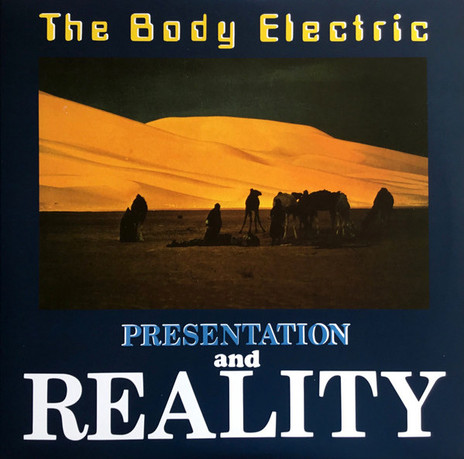
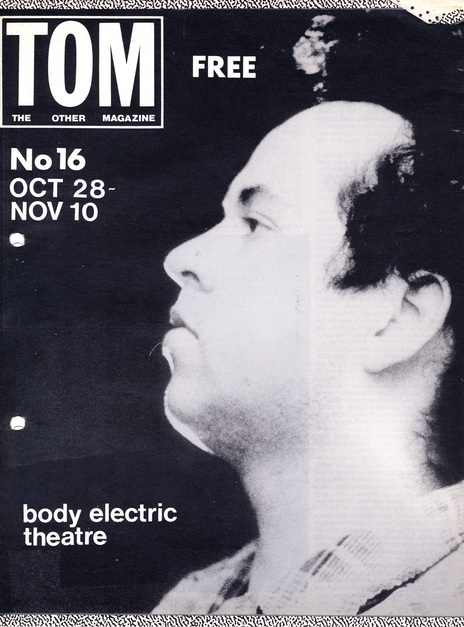
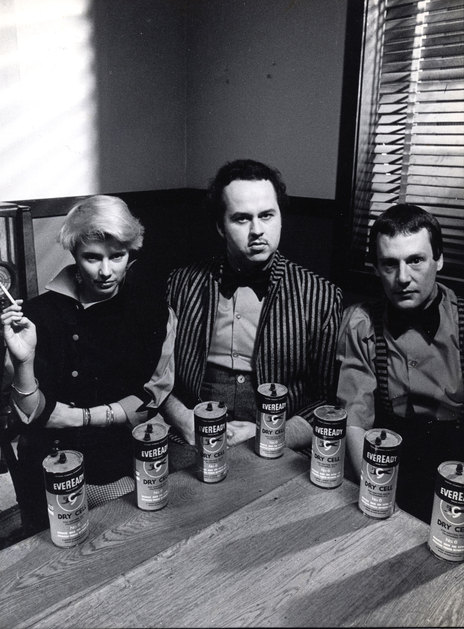
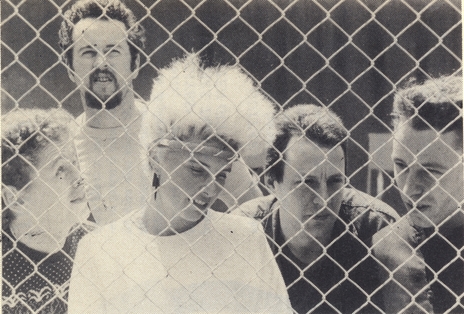
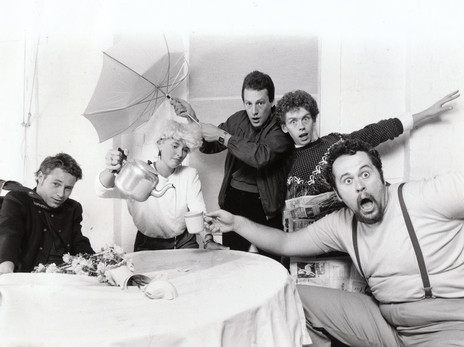
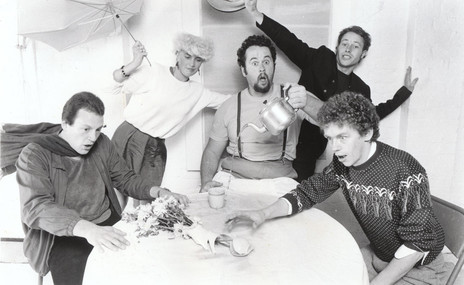
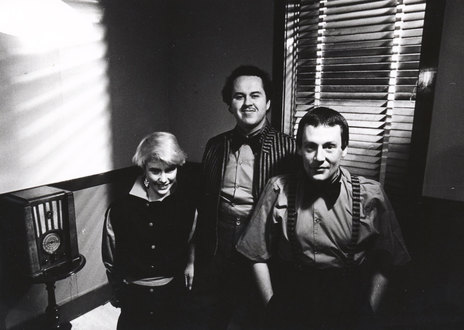
Alan Jansson moved north to Auckland and became a highly respected producer. In the mid-1990s he had a global smash hit with How Bizarre by OMC.
Alan Jansson - guitar, keyboards, production
Andy Drey - bass, production
Garry Smith - keyboards, production, vocals
Wendy Calder - bass
Paul Turney - keyboards
Visit our sister site
NZ On ScreenMade with funding from
NZ On Air